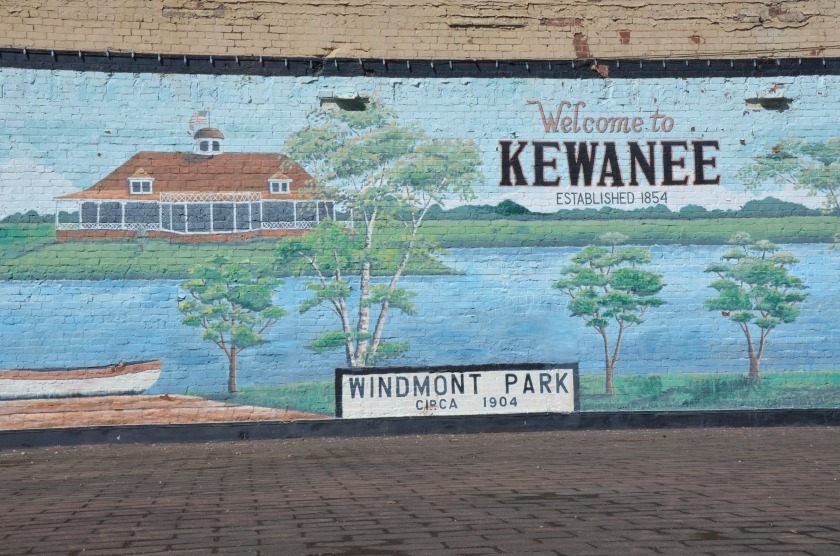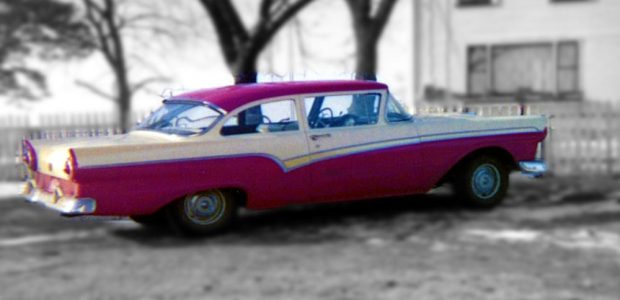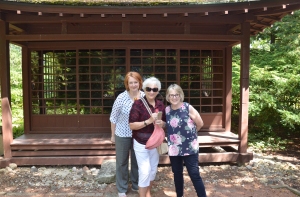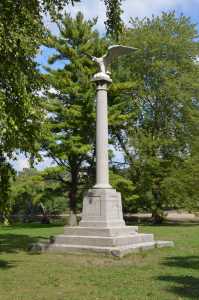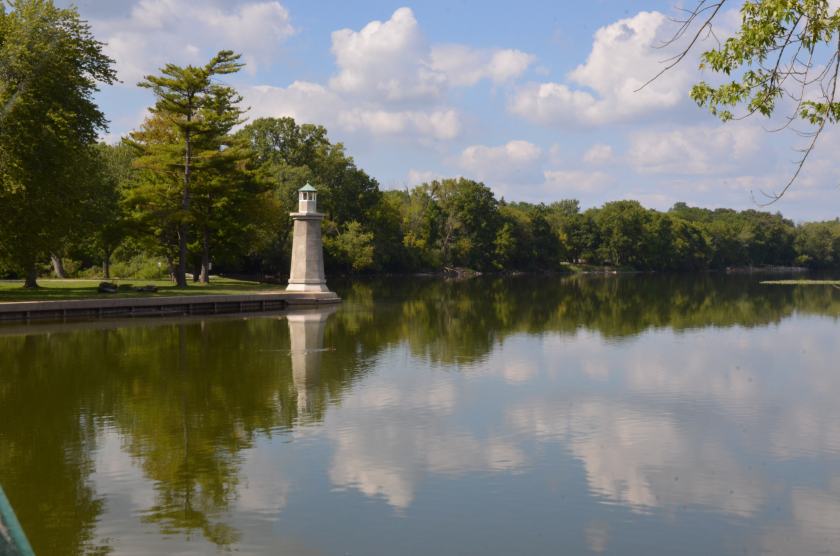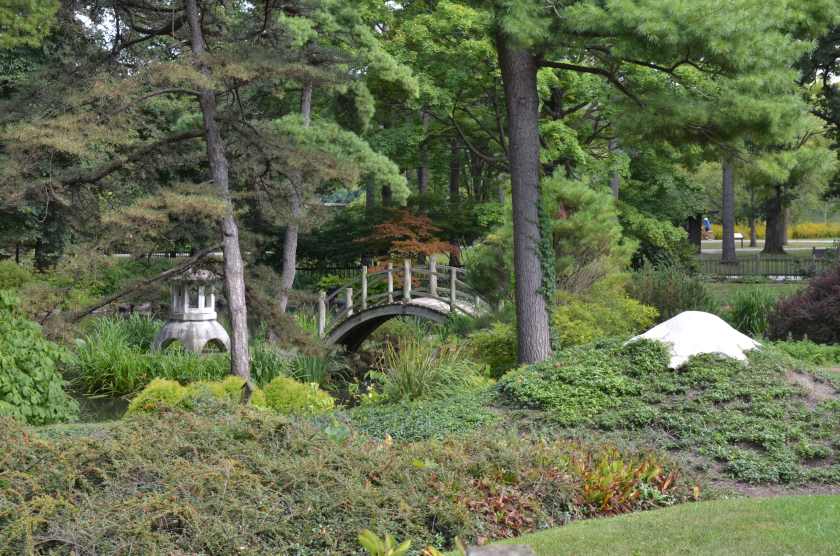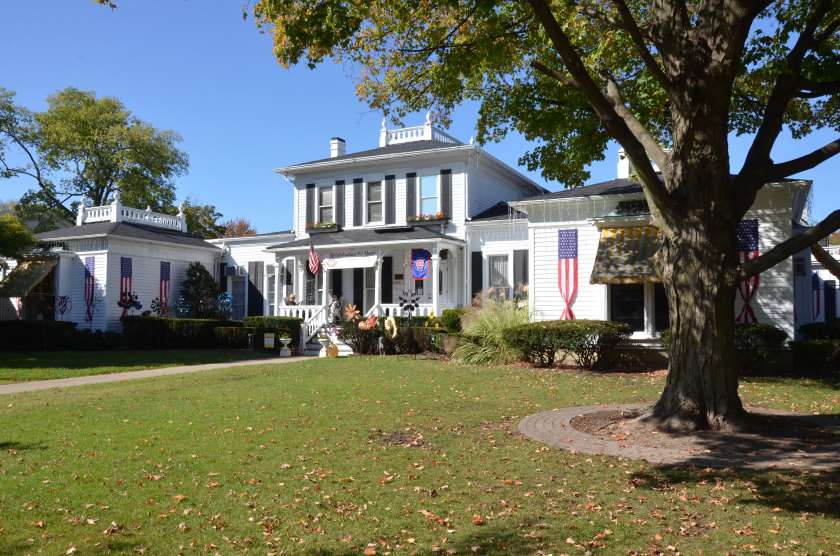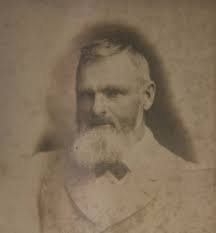
Just outside Kewanee, Illinois is a unique Victorian house called Woodland Palace. It was built in 1889 by an eccentric guy named Fred Francis. He was something of a Renaissance man, in a Kewanee-sort-of-way. Among his talents were mathematics, engineering, poetry, painting, and woodcarving.

Kewanee is about thirty miles north of Peoria. Fred was born in that area on January 21, 1856. He was an excellent student and graduated from the University of Illinois with a degree in mechanical engineering.
Fred met and married a widow named Jeanie Crowfoot in 1890. It was surely a case of opposites attracting – he was a vegetarian, she liked meat; he was an atheist, she was a devout Christian; he was a practicing nudist, she dressed in prim, Victorian style. But despite their obvious differences, they lived together for over thirty years, until Jeanie died of tuberculosis in 1921.
The home they shared was built by Fred using brick, stone, and native wood. It’s situated on sixty acres of wooded land. An interesting feature of the house is a dome that gives the building its “Woodland Palace” look.
Fred used his mechanical engineering skills to great effect throughout the house. He invented a way to air cool the rooms through a series of fans, have doors and windows that opened automatically, and enjoyed clean, running water – all this without the benefit of electricity. (He powered things by a windmill.)
When you enter inside, you’ll see a home that’s a rare combination of unusual, yet tasteful. The materials used throughout are high-end, and the craftsmanship is exceptional.
My favorite room is the Coach Room in the upper level of the house. It was built to resemble a railroad coach of the late 1800s. Each side of the “coach” had a bedroom.

Fred didn’t own a car, but he had a bicycle for transportation. He modified the front so Jeanie could ride with him. He took her nearly five miles to church and waited patiently outside until the services were over.


In later years, after Jeanie died, Fred enjoyed visitors to his land for picnics and nature walks, but he had his rules. The welcome/code-of-conduct sign he posted in the front yard is still there:

“STOP – READ THIS”
“Grounds are free for all who do right and all such are welcome. Those who throw paper and rubbish on the ground, meddle with property, or let kids do so, are hereby cordially invited to stay away. Fred Francis”
Fred passed away in 1926 and bequeathed his property to the City of Kewanee. Today it is operated as Francis Park and Woodland Palace, where you can picnic, camp, hike and tour Fred’s beloved home.
Bonus Stop:
Ryan Barn
Not far from Francis Park is the Ryan Round Barn. It’s the largest round barn in Illinois, measuring 80 feet tall and 85 feet in diameter. Dr. Laurence Ryan had it built in 1910. He was a brain surgeon with an international reputation in that field. He went to medical school at Chicago’s Loyola University in addition to studying in Vienna and Berlin. But he also had an interest in farming, having grown up in the Kewanee area.
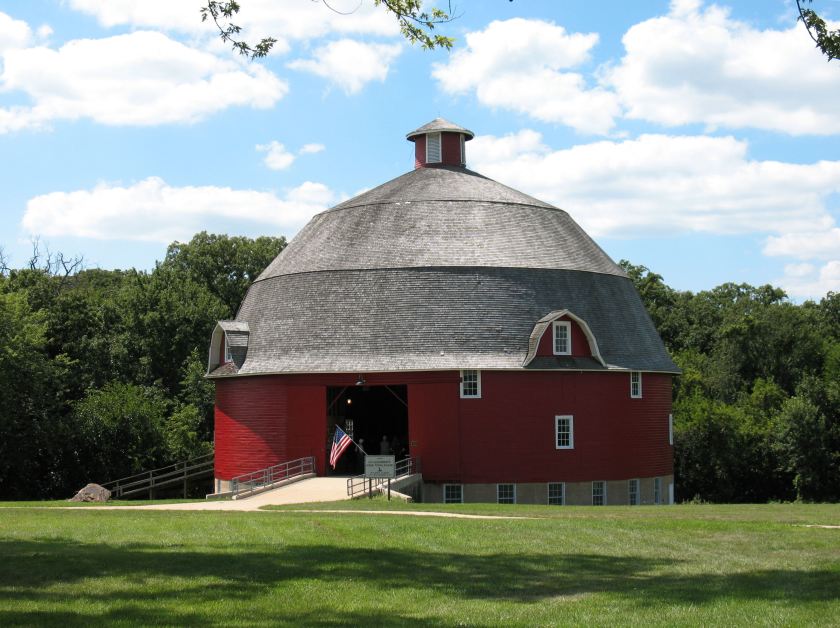
Round barns were popular from the late 1800s to the 1920s. They withstood high winds better than rectangular structures. (No corners for the wind to catch on and do damage.) This type of barn was also efficient for housing cattle and horses.
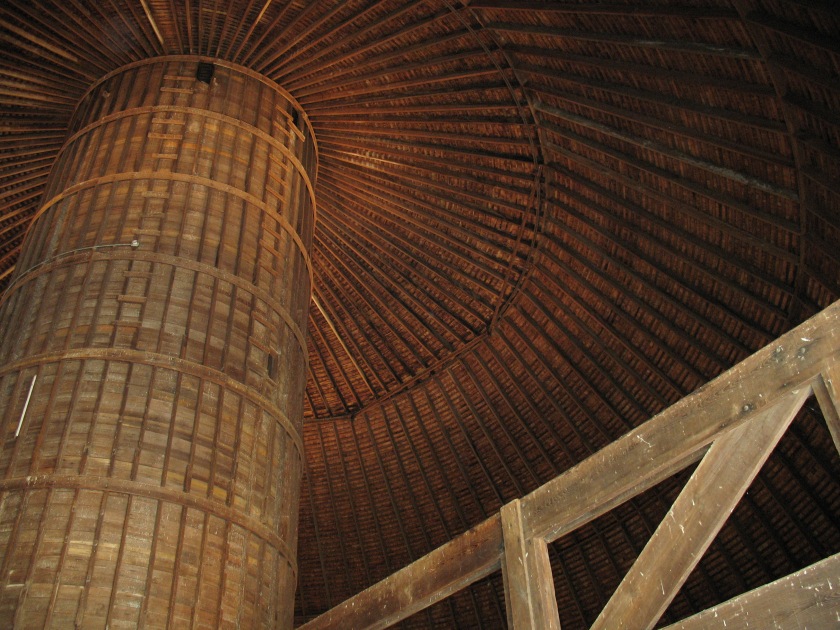
One of the most striking features of the barn is the ceiling. The silo in the middle held about 400 tons of corn.
In the lower level, Dr. Ryan added some modern conveniences to his barn including a duel track and trolley system to deliver feed and remove waste.
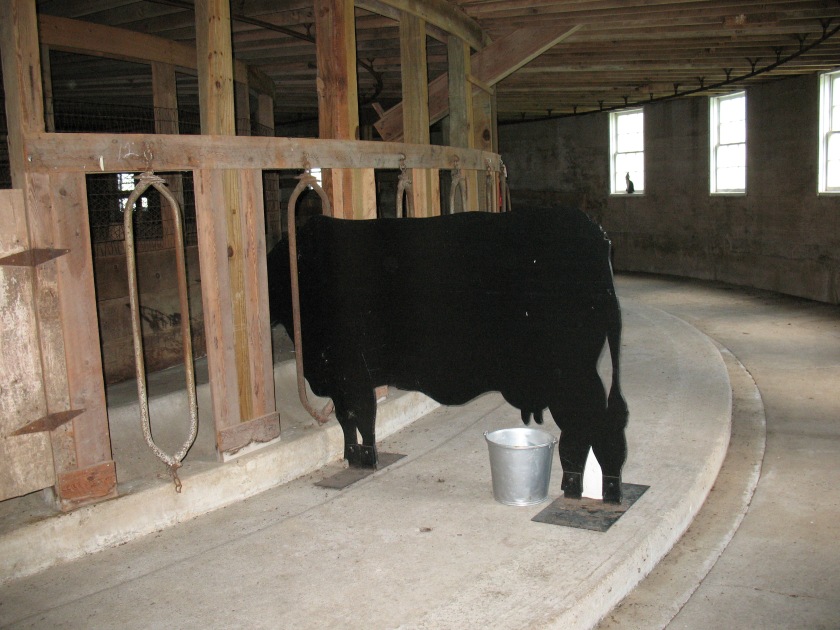
Today the barn is open for tours and houses a museum of early agricultural implements. You’ll want to check the website for open times at: www.dnr.state.il.us/lands/landmgt/PARKS/R1/JOHNSON.HTM.
Kewanee Murals
In the summer of 2013, a group of artists and sign painters known as the Walldogs arrived in Kewanee and painted murals at fifteen different locations in the downtown area. Various organizations and businesses sponsored the murals. The scenes highlight Kewanee’s past, present, and future. The sampling below shows some of the Walldogs’ beautiful murals.
